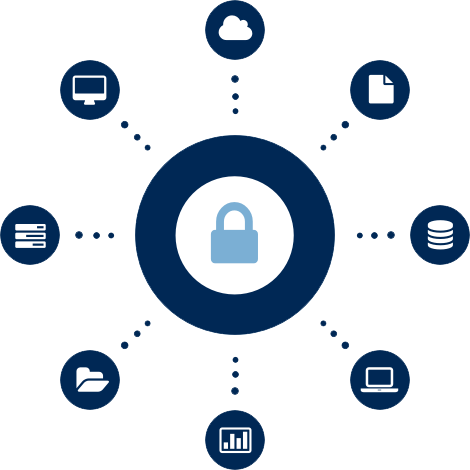Security Controls that detect and prevent attacks on the applications.

Email Gateway
An Email Security Gateway solution monitors emails being sent to an organization for unwanted content, and it prevents these messages from being delivered. Most email security gateways also offer similar monitoring capabilities for outbound emails.
Unwanted content in email messages includes malware, phishing attacks and spam. Some email security gateways are also able to detect and block the transmission of sensitive data, such as credit card numbers, Social Security numbers and healthcare records.
Forms of Email security gateways:
- public cloud-based;
- hybrid (a combination of public and private clouds);
- hardware appliance on premises;
- virtual appliance on premises;
- email server-based.
Web Gateway
Secure web gateway solutions help keep enterprise networks from falling victim to malware and threats carried by internet traffic and seemingly harmless websites.
At a minimum, they monitor and prevent data from malicious websites, online services and web applications from entering an internal network and infecting systems.
They should include application controls for popular Web-based applications, such as instant messaging (IM) and Skype.
Native or integrated data leak prevention is also increasingly included.
The solutions have various components, including malware detection and URL filtering.
Application Performance
The process of continually monitoring application availability, accessibility, and end-user application performance across an organization’s network in order to achieve optimal business network efficiency.
Business Benefits of APM:
- Increased Sales and Revenue
- Business Continuity – Reduced Downtime
- Better End-User Experience
- Greater Customer Satisfaction
- Higher Productivity
- Decreased Reliance on Costly Experts
- Greater Innovation
- Reduced Operational Costs
- Higher Google Ranking
- Intangible Benefits: Taking Emotion Out of the Equation
Application Delivery
Application delivery refers to using a suite of technologies that ensure that application content and functionality are efficiently and reliably accessible by a large number of clients or users.
The core component of application delivery is an application delivery controller (ADC), which is an advanced load balancer sitting in front of your application servers and directing client requests to your servers in a manner that maximizes performance and capacity utilization. Further, an ADC sends requests only to application servers that are online, ensuring that clients don’t receive errors due to a server outage.
The costs of ensuring high web application infrastructure availability, performance access and speed, and secure operations can be dramatically reduced using application delivery controllers (ADC) and server load balancers.
ADC solutions monitor heavy traffic loads on busy servers and re-route data to servers with less traffic, preventing crashes and keeping traffic flowing.
WAF (Web Application Firewalls)
A Web Application Firewall (or WAF) filters, monitors, and blocks data packets as they travel to and from a Web application. A WAF is differentiated from a regular firewall in that a WAF is able to filter the content of specific web applications while regular firewalls serve as a safety gate between servers. A WAF can be either network-based, host-based or cloud-based and is often deployed through a proxy and placed in front of one or more Web applications. Running as a network appliance, server plug-in or cloud service, the WAF inspects each packet and uses a rule base to analyze Layer 7 web application logic and filter out potentially harmful traffic.
By inspecting HTTP traffic, it can prevent attacks stemming from web application security flaws, such as SQL injection, cross-site scripting (XSS), file inclusion, and security misconfigurations.
Static and Dynamic security code review
Static and dynamic code analyses are performed during source code reviews. Static code analysis is done without executing any of the code; dynamic code analysis relies on studying how the code behaves during execution.
Static analysis source code testing is adequate for understanding security issues within program code and can usually pick up about 85% of the flaws in the code.
Dynamic code review has the additional ability to find security issues caused by the code’s interaction with other system components like SQL databases, application servers or Web services.
Combining both types of code review should pick up about 95% of the flaws, provided the reviews are done by someone able to understand the source code during static analysis, and that the range of tests for dynamic analysis is sufficiently wide.












